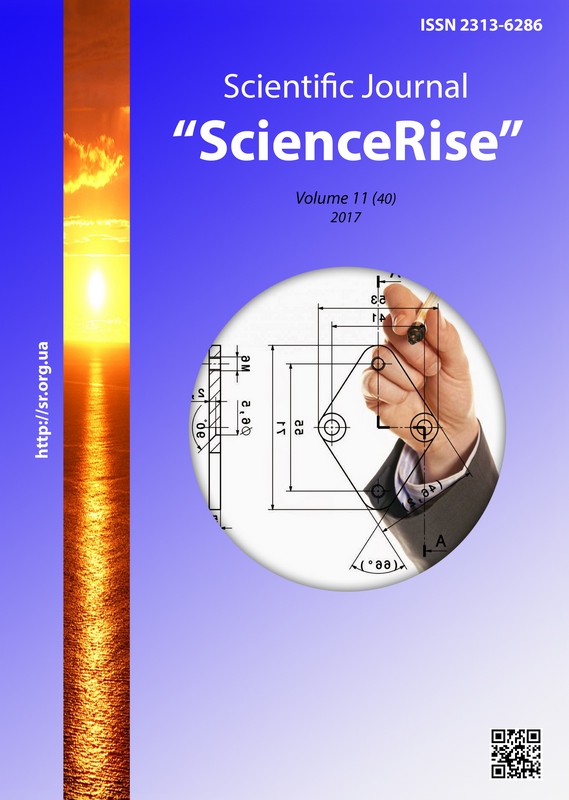Methodology of establishing electronic resource for the sphere of the beauty industry
DOI:
https://doi.org/10.15587/2313-8416.2017.116003Keywords:
electronic resource, methodology, structural element, stylistic direction, experts, alternatives, criteria of choiceAbstract
The article presents the methodology of creating an electronic network resource for training professionals in the beauty industry. The emphasis is on the specifics of the justification of the choice of structural elements as actual and appropriate headings and themes from the field of beauty, and features of the choice of stylistic direction of the design of the resource interface. The stages of the methodology allow to make an informed decision regarding a plurality of topics in each of the headings and to determine the stylistic direction of developing the interface of this resource. The implementation of the stages is carried out with the help of the use of mathematical tools
References
Free video courses and video lectures online Beauty Industry. Available at: http://edumarket.ru/library/fashion
Application for scheduling sessions and promoting beauty masters. Available at: http://moiprofi.ru/master
Information portal of the Academy of Scientific Beauty. Available at: http://ank.kiev.ua
Aesthetic portal. Available at: http://estportal.com
The site of the campaign "Lady Victory". Available at: https://lady-victory.com/ru
The website of the online magazine "Lada". Available at: https://krasalady.com.ua/category/krasa/manikyur
Electronic books of the sphere "Cosmetology". Available at: https://eknigi.org/dom_i_semja/42929-kosmetologiya.html
Bondar, І. О., Pavlenko, N. O. (2014). Metodika stvorennya mul'timediynogo navchal'nogo kompleksu z informatiki dlya glukhonimikh [Methodology of creating a multimedia educational complex for informatics for deaf-mute]. Systemy obrobky informatsii, 1 (117), 244–250.
Pushkar, O. I., Bondar, І. О. (2017). Modelyuvannya strukturnoyi pobudovy elektronnoho zhurnalu ihrovoho spryamuvannya [Simulation of structural construction of the electronic journal of game orientation]. Systemy obrobky informatsii, 2 (148), 237–241.
Bondar, I. O., Grabova, A. S. (2017). The task of the development of a multimedia educational publication on graphic design. Poligraficheskie, mul'timediynye i web-tekhnologi. Kharkiv: KhNURE, 125–126.
Service Google Trends. Available at: https://support.google.com
Service Google AdWords. Available at: https://adwords.google.com
Kini, R. L., Raifa, Kh. (1981). Prinyatiye resheniy pri mnogikh kriteriyakh: predpochteniya i zameshcheniya [Decision-making under many criteria: preferences and substitutions]. Moscow: Radio and Communication, 560.
Laurier, J.-L. (1991). Sistemy iskusstvennogo intellekta [Systems of artificial intelligence]. Moscow: The World, 568.
Podolskaya, M. N. (2011). Kvalimetriya i upravleniye kachestvom: laboratornyy praktikum. Ch. 1. Ekspertnye metody [Qualimetry and quality management: laboratory practice. P. 1. Expert methods]. Tambov: Publishing house of FGBOU HPE "TSTU", 80.
Saati, T. (1993). Prinyatiye resheniy. Metod analiza iyerarkhiy [Decision-making. Method for analyzing hierarchies]. Moscow: Radio and Communication, 278.
Downloads
Published
Issue
Section
License
Copyright (c) 2017 Irina Bondar, Anastasiia Kozlova

This work is licensed under a Creative Commons Attribution 4.0 International License.
Our journal abides by the Creative Commons CC BY copyright rights and permissions for open access journals.
Authors, who are published in this journal, agree to the following conditions:
1. The authors reserve the right to authorship of the work and pass the first publication right of this work to the journal under the terms of a Creative Commons CC BY, which allows others to freely distribute the published research with the obligatory reference to the authors of the original work and the first publication of the work in this journal.
2. The authors have the right to conclude separate supplement agreements that relate to non-exclusive work distribution in the form in which it has been published by the journal (for example, to upload the work to the online storage of the journal or publish it as part of a monograph), provided that the reference to the first publication of the work in this journal is included.

